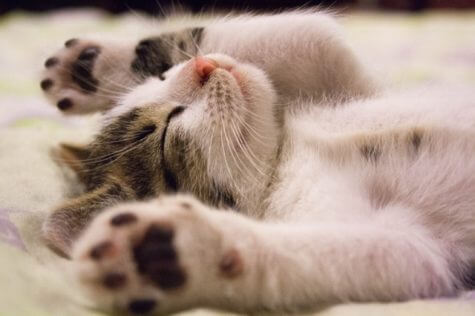BELFAST, Ireland — Are cats more likely to be righties or lefties? Yep, there’s a study for that. And believe it or not, there’s an actual preference that hinges on gender.
Researchers from Queen’s University in Ireland are the first to discover that female cats tend to favor their right paw, while males show a preference for their left. While it might seem like a silly study, the authors believe paw preference can actually provide valuable health information to veterinarians and scientists.

“Beyond mere curiosity, there may be value to knowing the motor preference of one’s pet. There is some suggestion that limb preference might be a useful indicator of vulnerability to stress,” explains Dr. Deborah Wells, one of the study’s co-authors, in a university release.
The team recruited 44 cats for the experiment — 24 males and 20 females — and studied the behaviors and movements of felines inside their homes. Prior studies on limb preferences had animals involved in forced tasks, however the research team for this project felt that allowing the subjects to go about their business in a natural setting would provide them a more accurate result.
Owners were instructed to record their pet’s use of their paws at random times the cats were walking down the stairs and stepping over raised objects. They were also tasked with recording which side of the body the cats slept on. As a control, the pets took part in one “forced” test which required them to grab food inside a three-tier tower.
The results showed a significant paw preference when it came to each activity — 70 percent of the cats favored a paw when it came to walking down the steps, with slightly less (66 percent) doing so for stepping over objects. In the forced task, 73 percent used a specific paw to reach for food. Males showed to be left-paw dominant, while females were righties in all of the cases.
“The findings point more and more strongly to underlying differences in the neural architecture of male and female animals,” says Wells.
Interestingly, there was no noticeable preference when it came to sleeping.
Wells says that paw preference can be an indicator for stress or hormonal activity. She points to a recent discovery by the team that dogs which show favor to their left paws tend to be more pessimistic than right-limbed dogs.
“Ambilateral animals with no preference for one side or the other, and those that are more inclined to left-limb dominance, for example, seem more flighty and susceptible to poor welfare than those who lean more heavily towards right limb use,” she says. “From a pet owner’s perspective, it might be useful to know if an animal is left or right limb dominant, as it may help them gauge how vulnerable that individual is to stressful situations.”
Future research may focus more on the gender aspects so researchers can better understand why each sex has its preference.
The study’s findings were published this month in the journal Animal Behaviour.
